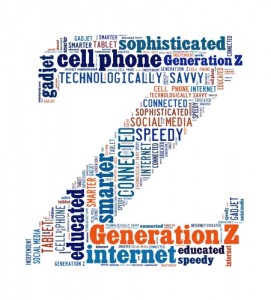I returned recently from a keynote-giving junket that took me to Toulouse, France and then to Springfield, Missouri. Some contrast, I know. (Although it should be noted that the food and the hospitality were excellent in both places.) It was an exciting trip filled with opportunities to share my theory of Arts Talk and to learn from a variety of smart and engaged people.
On October 15 I addressed the “Resources and Innovations in the Americas” conference at the University of Toulouse’s International de L’Institut des Amériques. The conference brought together scholars from around the world to discuss the changing dynamics of innovation in the sciences, health, social welfare, legal and cultural/arts spheres. Let me say first how invigorating it was to get out of the arts box and talk about a wide range of global issues. In my keynote, I spoke about the evolving relationship between technology and audience engagement strategies, with an emphasis on how the shifting value structure of our digital culture is contributing to the desacralization movement within the U.S. arts industry. In my conversations with conference attendees I heard a great deal about the legacy of sacralization in other countries, from France to Uruguay to Brazil. Those conversations have motivated me to do more reading, thinking and writing on the collision of emerging technologies and sacred arts-going habits outside of the U.S.
 In Springfield my talk was hosted by the Missouri State University College of Arts and Letters and the Theatre and Dance Department. There I focused on emerging digital habits among Generation Z (or iGeners) audience members involved in an array of cultural experiences (from the so-called serious arts to social television, club music and sports). As I explained in my talk, our cultural hesitancy to participate in public meaning making around the serious arts is a natural consequence of sacralization. Using a slide-show history tour, I illustrated how audience sovereignty over meaning and value was actively discouraged during the 20th century, turning what had historically been a three-dimensional arts experience—witnessing an arts event/object and having the opportunity to participate in the articulation of its meaning and value—into a two-dimensional encounter often lacking the depth and pleasure of Arts Talk.
In Springfield my talk was hosted by the Missouri State University College of Arts and Letters and the Theatre and Dance Department. There I focused on emerging digital habits among Generation Z (or iGeners) audience members involved in an array of cultural experiences (from the so-called serious arts to social television, club music and sports). As I explained in my talk, our cultural hesitancy to participate in public meaning making around the serious arts is a natural consequence of sacralization. Using a slide-show history tour, I illustrated how audience sovereignty over meaning and value was actively discouraged during the 20th century, turning what had historically been a three-dimensional arts experience—witnessing an arts event/object and having the opportunity to participate in the articulation of its meaning and value—into a two-dimensional encounter often lacking the depth and pleasure of Arts Talk.
During the post-talk discussion I had the chance to hear a range of perspectives on the issues I raised and to engage in conversation about changing audience protocols, both online and inside cultural venues. The students (many of whom I had met earlier in the day when I attended a session of Professor Melanie Dreyer-Lude’s Honors College course, “Interrogating Empathy”) seemed very interested in thinking through the relationship between the past and present. Like most audiences for my talks, they were surprised to learn just how interpretively active Western audiences had been up until the late 19th century. But, unlike some of my audiences, they seemed eager to think together about how we might apply that history lesson to 21st century arts going. Perhaps this is because, as digital natives, they don’t see technological platforms for aiding their enjoyment of the arts as odd or out of place. In fact, what they see as out of place (and out of sync) is the resistance to employing technologies that could enable them to be fully engaged participants in the meaning making process and in a culture of Arts Talk (audience-produced meaning making that occurs in/through public settings and mechanisms).
Many of the student comments focused on the issue of increasing audience agency—there seemed little disagreement that this would also increase interest and attendance of the serious arts. Some liked the idea of greater physical agency during arts events (tweet seats, etc.). Some suggested that more opportunities for learning about an art form (“getting under the hood”) would empower the audience voice. And most felt strongly that the current level of inhibition over making meaning is at the heart of the problem.
The student comment that is still ringing in my head two weeks after my visit to Missouri came from a Theatre and Dance major who approached me during the reception after my talk. She told me that I had helped her to understand why her mother always gives a congratulatory hug after her performances and then says: “So, what did it mean?”

Why this web site don’t have other languages support?
[WORDPRESS HASHCASH] The poster sent us ‘25464518 which is not a hashcash value.